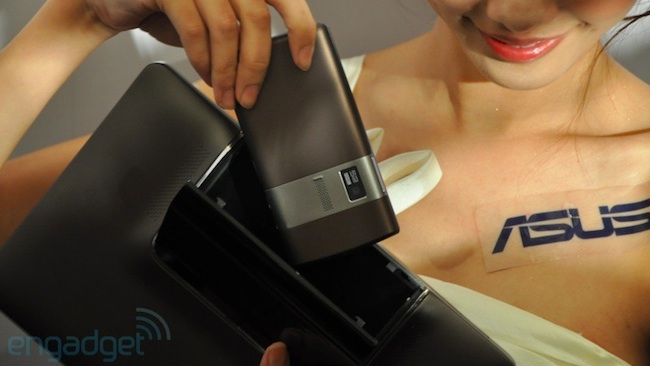Anyone remember the Asus Padfone? It was announced way back in May of this year, only to be delayed until 2012 while Asus tweaks it so that it can run Ice Cream Sandwich, the latest version of Google’s Android operating system. What makes the Padfone unique is that it slides into a tablet cradle, transforming the device into what’s essentially a 10 inch tablet. Whether or not the concept takes off doesn’t really concern us at this point, what we’re interested in is the Qualcomm S4 that’s recently been discovered to be at the heart of the Padfone. Thanks to someone who ran GLBenchmark on the Padfone, we now know that the latest revision of the device comes with a Qualcomm MSM8960, the first time we’ve seen an S4 chip in the wild. We know the MSM8960 is a dual core chip that scales to 1.5 GHz, but the version inside the Padfone only does 1 GHz. That’s a bit disconcerting. What’s worse is according to the benchmark data the GPU inside this thing is the Adreno 220, not the more advanced 225 that’s supposed to be in the MSM8960. That being said, we could be looking at early silicon, immature drivers, and a whole host of other variables that could change by the time this thing comes out.
So how fast is this thing? It scored 52 frames per second in the GLBenchmark 2.1 Pro Offscreen 720p test. To put that into perspective, just yesterday we posted a chart from Anandtech that showed the iPhone 4S pulling 123.1 frames per second in the same test, the Samsung Galaxy S II doing 67.1 frames per second, and the new Samsung Galaxy Nexus doing 45.2 frames per second. Swedish tech site NordicHardware they managed to get their hands on a Lenovo tablet with an NVIDIA Tegra 3 and itt did 82.6 frames per second, again on the same test.
We can’t say this enough: All these numbers are due to change, you should only read reviews of actual retail hardware, and most importantly you shouldn’t take benchmarks too seriously since there are much more important factors (size, battery life, the application ecosystem) to take into consideration when buying your next smartphone.
